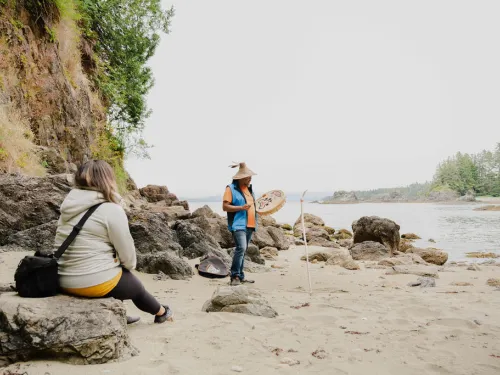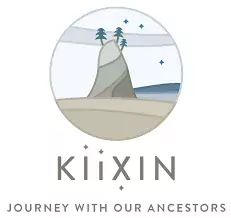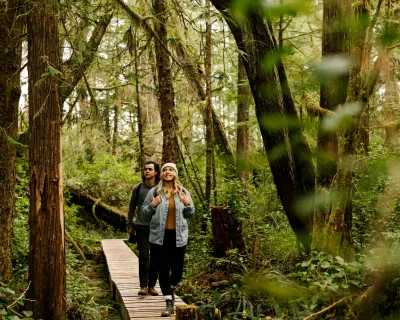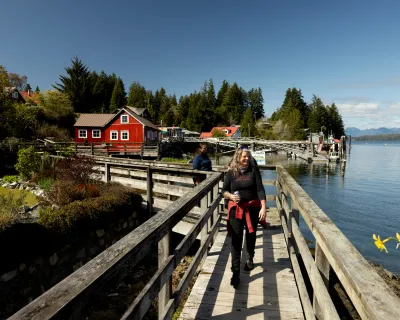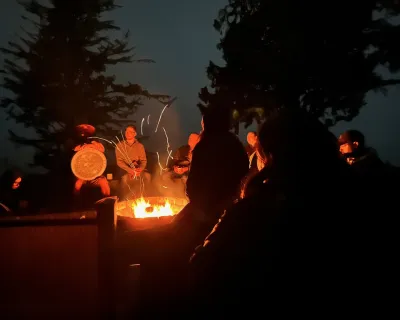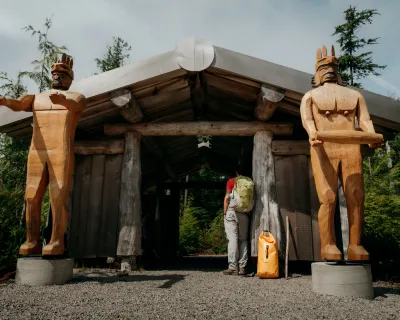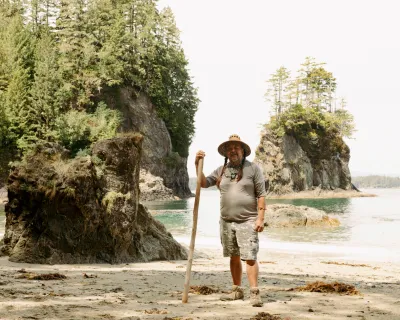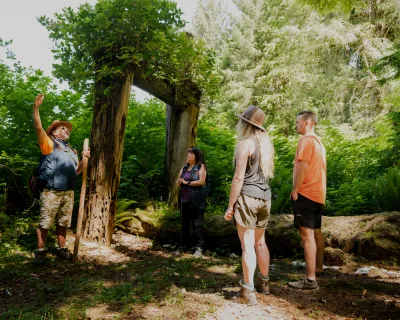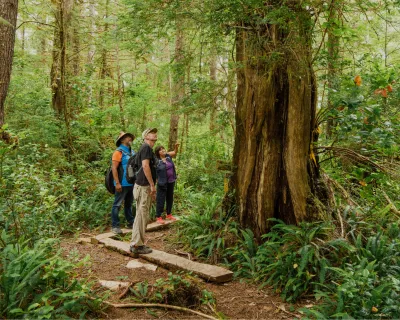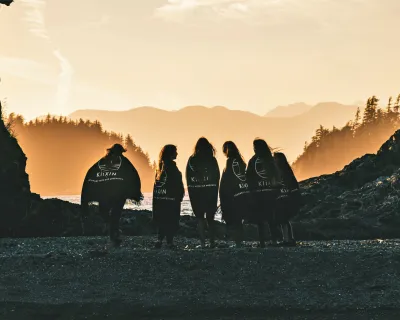Peering Beyond Colonial History: Huu-ay-aht's Kiixin Village
It's a still, overcast afternoon just outside of Bamfield, Vancouver Island. Ocean waves advance and recede, gently rolling the hundreds of thousands of small rocks that comprise Kiixin Beach. This constant, steady chorus is matched by a song of another kind: the deep voice of tour guide and cultural educator Wishkii, which reverberates off a nearby rock face. The sound fills the space in a manner that is utterly mesmerizing.
His story relayed in the song is one of the Huu-ay-aht nation's prior role within the whaling and fur trades. Crews were often comprised of indigenous people who knew the land and waters best.
"Though we were also legislated out of the industry," Wishkii asserts pointedly, "laws were designed to keep us out once settlers had learned from our experts." Such an observation acutely captures a dissonance that remains still to this day (perhaps more apparent than ever before, in an era of Land Back). Tensions are high, but it seems we are on the precipice that is the turning point towards meaningful change.
Wishkii (like myself) is optimistic and maintains that education and the sharing of knowledge may well be the path towards moving forward together in a good way. It is within this context that Kiixin Village becomes a vantage point from which we can peer far beyond any colonial account or history to better ground ourselves in relation to the past, the present, the future, and each other.
Perspective is a dually important word here. Looking beyond a colonial history means looking much further back in time (the term "time immemorial" could not have more apt an application than here): Kiixin - the original village of the Huu-ay-aht people - can be dated to have been built around 5,500 years ago, though the nation believes it to be considerably older. That's worth repeating. 5,500 years. That's older than the Pyramids of Giza. The village is the only place on the south coast of British Columbia where remnants of traditional longhouses still stand, and entering the space, the sheer magnitude of this fact strikes you in a very distinct way.
Summarized, Wishkii considers the tour "a chance to go on a journey with our ancestors - a journey through time." Standing in the village, it's as if something has shifted in your perception of time and place in a very real, felt manner. There's almost a lightness to your presence as you walk not "into the past," but rather through deep seated, entrenched time itself, guided by the descendants of those who had lived here. In short, it's the embodied feeling of cyclical rather than linear time. Such firsthand, lived experience is genuinely invaluable.
Perspective is also important in regard to the knowledge keepers (the other of whom is the marvellous Stella Peters) who lead the tours to the village. Their approach is not anthropological in nature but comes from an intimate understanding of the land and history not achievable from an outside frame of reference. It is through this retelling of history from an internal point of view that we can learn the most from each other, attain relative bearings as to where we're at now, and chart a path forward.
"Education is the key," says Wishkii. "I believe that learning and unlearning happen at the same time. We've always been taught from a certain perspective - a colonial perspective of the history of the land - but now we have an opportunity to see beyond the last 150 plus years."
Tours to Kiixin are available throughout this summer, up until September 12. To book your trip today, visit: https://kiixin.ca/
When You Go
Kiixin is a national historic site, located on Vancouver Island’s west coast, just outside of Bamfield BC within Huu-ay-aht First Nations traditional lands.
Getting to Kiixin can be done in two ways:
1) Driving out of Port Alberni, noting that it is an approximately 1.5-hour drive along an active gravel logging road. A vehicle with good tires and ideally 4X4 is recommended.
2) Float plane via Pacific Sea Planes https://www.pacificseaplanes.net/
Accommodations located within Bamfield are less then 10 mins from the Kiixin National Historic Site include Huu-ay-aht First Nations group of businesses:
The Hacas Inn https://hacasinn.ca/
The Upnit Lodge https://upnitlodge.ca/
Or camp at Pachena Bay Campground https://pachenabaycampground.ca/
Kiixin Tours are approximately four hours in length, offered daily and multiple times on the weekend. Day tours are by donation (don’t forget to tip your guide) while the evening tours are $30 per person / $50 per couple.
Let us know what you learn #Kiixin #Huuayahtstrong #ZenSeekers
